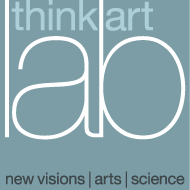Formal Logic, Totality and The Super-additive Principle*1)
Gotthard G�nther
If the title of this paper combines Formal Logic and Totality (Ganzheit) it is resisting a general trend which is still strong in present scientific activities. The most comprehensive theory of Totality which we possess is contained in Hegel�s logic. But every student of this thinker knows how emphatically Hegel denounces formalization. According to him the structure of all totalities is "dialectic". Formal logic is based on a strict dichotomy of form and content (matter). But dialectics fuses the two in the superadditive principle of synthesis which combines thesis and antithesis in a way in which the contradiction between the two is not only retained but elevated to a higher level. The general consensus still
is that the retention of contradiction - which is indeed demanded by all systems to which we ascribe the character of totalities - obviates all attempts of formalization. This belief is now more than two thousand years old and it is hard to shake.
However, a re-evaluation of the theory of dialectics and its super--additive principle, where the whole is more than the sum of its parts, has recently become a pressing necessity. Among the new scientific disciplines which have sprung up in recent times Cybernetics seems to have the widest interdisciplinary spread. The topics it deals with range from mathematics (information theory) and physics (quantum mechanics) over biology (bionics) to the theory of consciousness, of culture and of human history.
[21] It Is hardly necessary to point out that the problem of the structure of totalities turns Up various aspects within-the scope of Cybernetics. Nevertheless a basic investigation into the formal logical texture of totalities is still missing. The ancient prejudice that such inquiry loads us straight out of the realm of formal, codifiable procedures of logic is still too strong.
Some progress has been made just the same. In a very relevant paper on biologic "coalitions"
[32] H. von Foerster has
pointed out that such phenomena are characterized by what he calls, a super-additive nonlinear principle of composition where some measure
F of the whole is more than the sum of the measures of its parts:
H. von Foerster�s argument cannot be repeated in detail. It will be sufficient to say that by applying the concept of "logical strength" (Carnap, Bar-Hillel) according to which a truth function increases its strength with the number of negative values it applies the author shows that a "coalition" of two statements A and B signifies such a super-additive principle:
Table (I) shows on the left side the value constellations (0 for negative and 1 for positive) of the statements A and B. It is obvious that the logical strength of each is �. On the right side we have first the equivalence relation (
�) of A and B which gives us their average strength as a result of what may be called a normal adjunction. This average strength is, of course, again 1/2. The last value sequence represents conjunction (&), in von Foorster�s words a "coalition", and the logical strength of the value sequence is in this case 3/4 since, compared with the equivalence relation the last value of the sequence has turned from 1 to 2 which
adds one quarter the strength of the function.
<div style="color: #000000; font-style: normal; font-weight: normal; margin-bottom: 0pt; margin-left: 0pt; margin-right: 0pt; margin-top: 0pt; text-align: justify; text-decoration: none; text-inde
